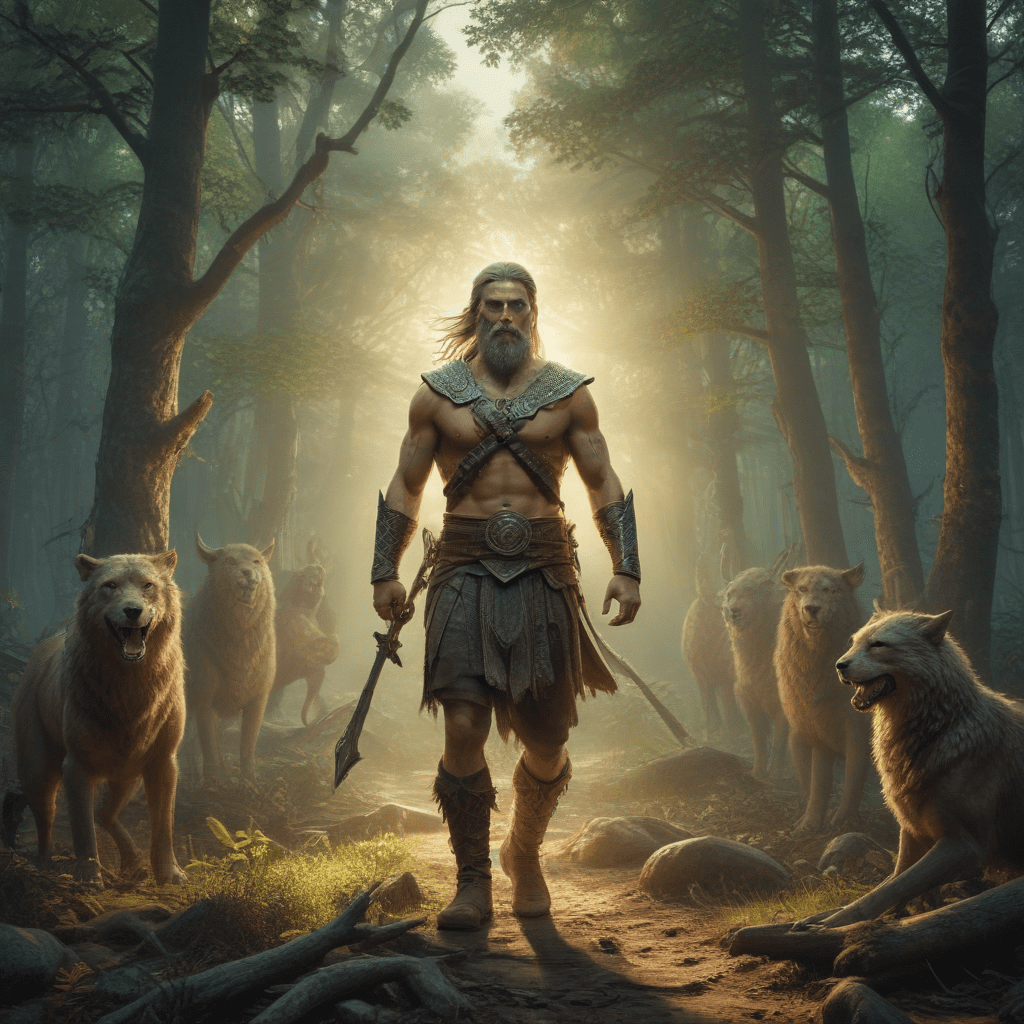1. Introduction: Slavic Mythology as a Tapestry of Survival and Adaptation
Slavic mythology, a rich tapestry woven from the threads of survival and adaptation, offers a glimpse into the beliefs and practices of a resilient people who faced the challenges of a harsh and unpredictable environment. Through tales of creation, nature deities, heroes, and mystical creatures, Slavic mythology reveals the ways in which our ancestors sought to make sense of their world and find protection amidst adversity.
2. The Creation Myth: Rod and the Birth of the Slavic World
The Slavic creation myth revolves around Rod, the primordial deity from whom all things originated. Rod emerged from an eternal void and created the universe, including the Slavic world and its inhabitants. This myth echoes the cosmogonic beliefs of other cultures, emphasizing the power of a single divine force to bring forth all that exists.
3. Nature Deities: Perun, Veles, and the Realm of the Spirits
The Slavic pantheon is replete with nature deities who embody the forces of the natural world. Perun, the god of thunder and lightning, protected warriors and was revered as the guardian of justice. Veles, the enigmatic god of the underworld, ruled over magic, wealth, and the spirits of the dead. These deities, along with countless other spirits, inhabited the intricate realms of Slavic mythology.
4. Heroes and Demigods: Ilya Muromets and the Bogatyrs
Slavic mythology is rich in tales of heroes and demigods who embodied the virtues of bravery, strength, and self-sacrifice. Among the most beloved heroes is Ilya Muromets, a legendary warrior who fought against invaders and protected the Slavic people. The bogatyrs, a group of heroic knights, became symbols of courage and unwavering loyalty.
5. The Sacred Tree and the World Serpent: Yggdrasil and the Viy
The sacred tree, known as Yggdrasil in Norse mythology, played a central role in Slavic beliefs. It was seen as a cosmic pillar connecting the heavens, the earth, and the underworld. The Viy, a fearsome creature with the ability to freeze people with its gaze, guarded the tree and protected the realm of the dead from the living.
6. The Goddess of Fate: Mokosh and the Power of Destiny
Mokosh, the Slavic goddess of fate, held sway over the threads of destiny. She was believed to spin the threads of life, determining the fate of each individual. Her presence in Slavic mythology highlights the belief in the interconnectedness of all things and the influence of fate on human affairs.
7. Rituals and Festivals: Celebrating the Seasons and Honoring the Gods
Slavic rituals and festivals marked the rhythm of the seasons and paid homage to the gods. The winter solstice, known as Koliada, celebrated the rebirth of the sun and the coming of spring. Other festivals included Maslenitsa, a joyous celebration of the end of winter, and Kupala Night, a mystical festival honoring the summer solstice.
8. Slavic Charms and Amulets: Protecting against Evil and Ensuring Good Fortune
Slavic charms and amulets were imbued with protective powers to ward off evil and bring good fortune. These talismans, often crafted from natural materials, held symbolic meanings and were worn or carried by individuals to protect themselves and their loved ones.
9. Animism and Folk Beliefs: Interacting with the Natural World
Animism, the belief that spirits inhabit all things, was deeply ingrained in Slavic culture. People interacted with the natural world with respect and caution, believing that spirits could influence their lives. Folk beliefs, such as the existence of house spirits and forest protectors, shaped their daily interactions with the environment.
10. Conclusion: The Enduring Legacy of Slavic Mythology in Modern Culture
Slavic mythology, with its tales of creation, nature deities, heroes, and mystical creatures, continues to inspire and captivate audiences today. Its themes of survival and adaptation resonate with modern readers, providing insights into the human experience and the enduring power of storytelling. Through its influence on literature, art, and popular culture, Slavic mythology remains a vibrant and enduring legacy.
FAQs
What is the significance of the World Serpent in Slavic mythology?
The Viy, often depicted as a monstrous serpent, represents the forces of chaos and the underworld. It guards the realm of the dead and is a symbol of the dangers and mysteries that lie beyond the boundaries of human understanding.
How did Slavic rituals and festivals contribute to the community?
Slavic rituals and festivals provided a sense of unity and belonging within the community. They celebrated the changing seasons, honored the gods, and reinforced social bonds. These events were an integral part of Slavic life and culture.
What is the symbolism behind Slavic charms and amulets?
Slavic charms and amulets were often adorned with symbols derived from nature, such as the sun, moon, and stars. These symbols represented protective powers and were believed to bring good fortune and ward off evil.





